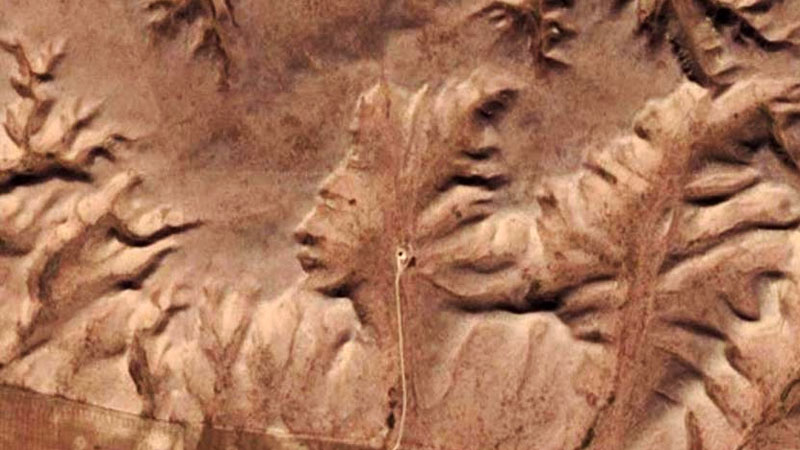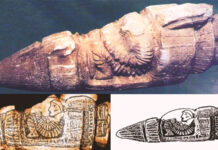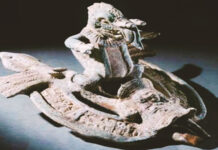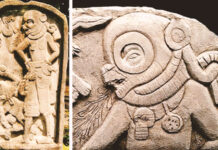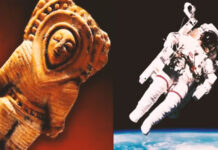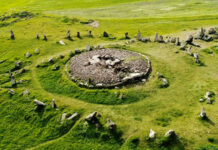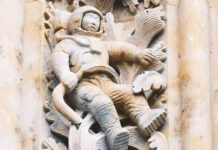The Badlands Guardian is located near Medicine Hat in southeastern Alberta, Canada, not far from the US border. The location of this geological wonder is very remote, in an area that has traditionally been home to the Siska First Nation people, also known as the Blackfoot tribe.
The badlands are desolate lands with ravines, chasms, holes and hills. The formation occurred during the end of the last Ice Age, when melting glacial water created valleys and slopes in sedimentary rocks and clayey soils. The effect of wind and water on these landscapes means that they are constantly changing. Winds and heavy rains carve channels through the rocks relatively quickly. The constant erosion of sedimentary soil and clay creates many geomorphic features with unique and strange topographies that have intrigued people since the arrival of First Nations.
The wild landscape has long held spiritual significance for the Siska people, and important archaeological sites exist in Alberta’s Badlands, having been the site of extensive dinosaur discoveries over the years.
The first Europeans to settle in the Canadian prairies gave these geographic areas the name of “Badlands”, as they were considered inhospitable and dangerous. In these landscapes, it is difficult to find your way around and find your way around, and it is very easy to get lost in the winding ravines.
The Story of the Badlands Guardian
This geological marvel, the Badlands Guardian, was only discovered in recent years and purely by chance. It is a geographical feature that, when seen from above, resembles the face of an indigenous person in profile. The head is facing west and is very large, measuring around 255 meters wide by 225 meters high. It has the distinctive features of an Indigenous First Nations person and appears to be wearing the traditional feathered headdress that is synonymous with Aboriginal culture.
Some people believe that the structure may have been intentionally created by humans, although more likely it is just the result of natural processes. The Badlands Guardian would be an example of the empty mask illusion, in which a concave image appears to be a convex image. Erosion of clayey soil and sedimentary rocks has led to many similar geomorphological features across the world. An oil well and road near the site give the impression that the Badlands Guardian is wearing headphones, which lessens the overall effect of this geological marvel.
The structure was produced hundreds of years ago or more, possibly by a violent storm that triggered floods and winds that eroded the clay soil and sedimentary rocks. Erosion would have left ravines and channels that formed the image of the head that is only visible from a high altitude.
The feature was discovered on Google Earth in 2005 by Lynn Hickox, and since then, the Badlands Guardian has been considered one of the most notable finds on Google Earth.
When the discovery was announced, it caused a huge sensation on the internet and a lot of excitement in Canada. The name for the remarkable geological formation was selected after local residents were invited to participate in a contest organized by Canadian radio station CBC Radio One. The winner was the “Badlands Guardian”.
If you plan to visit the area and witness this natural wonder, think again, after all it can only be seen from high above and a great distance above the Earth. But if you’re interested in seeing the Badlands, there are guided tours available in the area that will allow you to see other amazing landscapes and geological formations.
However, if you want to enjoy the Badlands Guardian without leaving your home, just view it on Google Earth at coordinates 50°00’38.2″N 110°06’48.3″W or on the map below.

